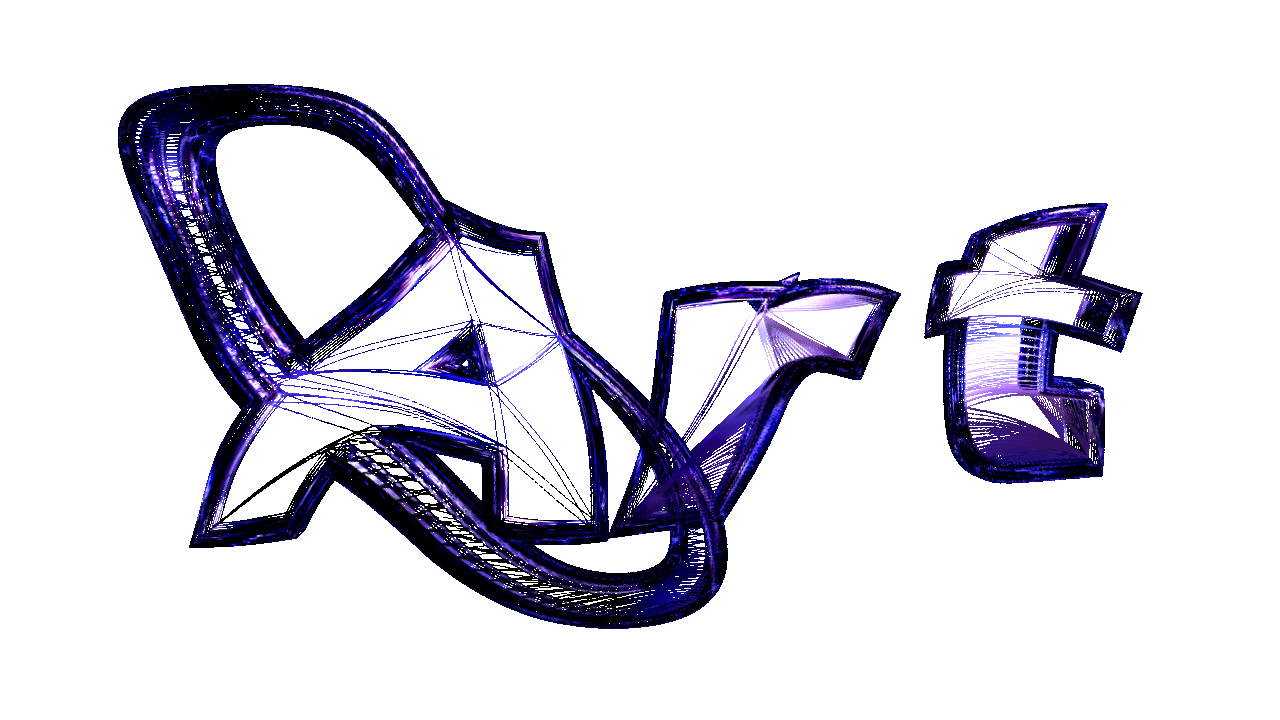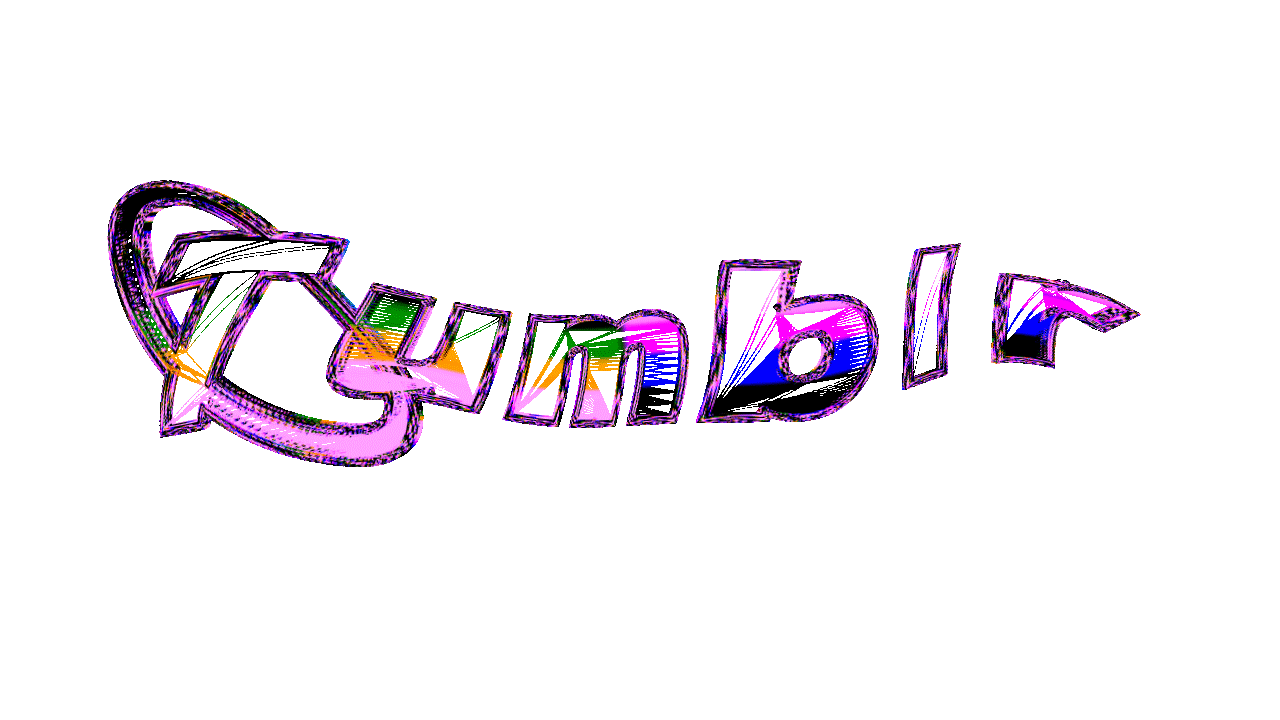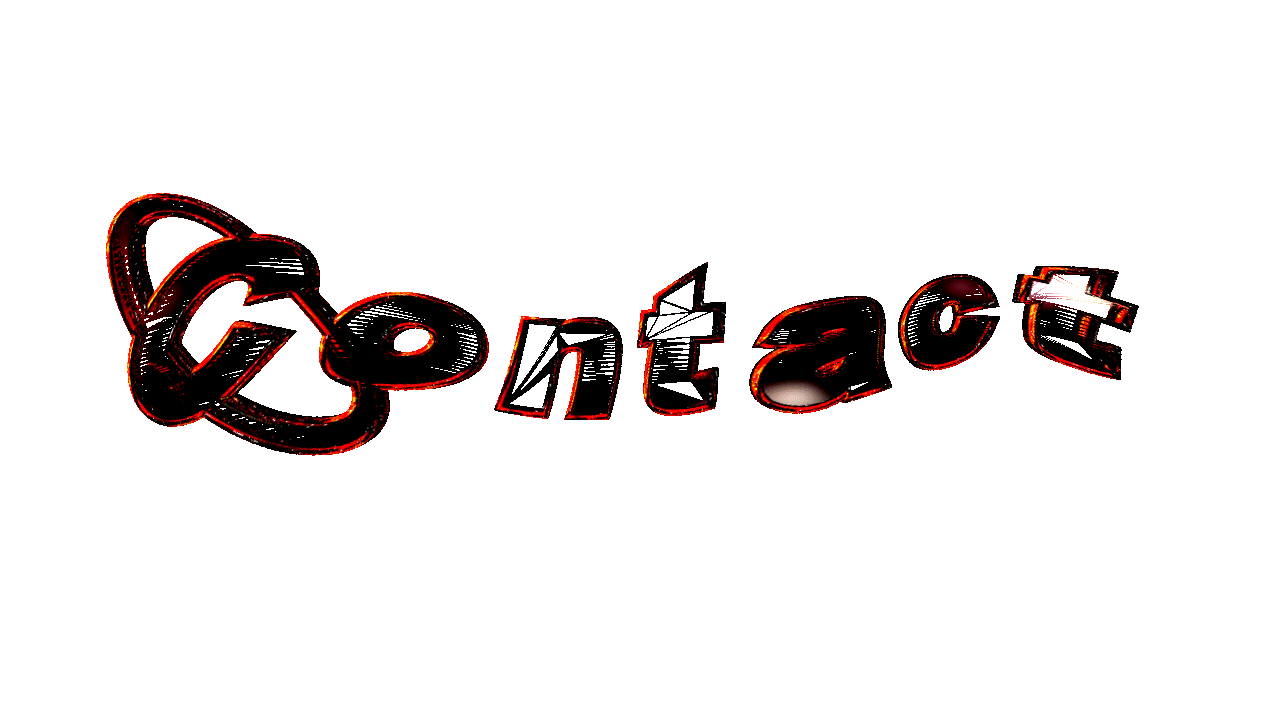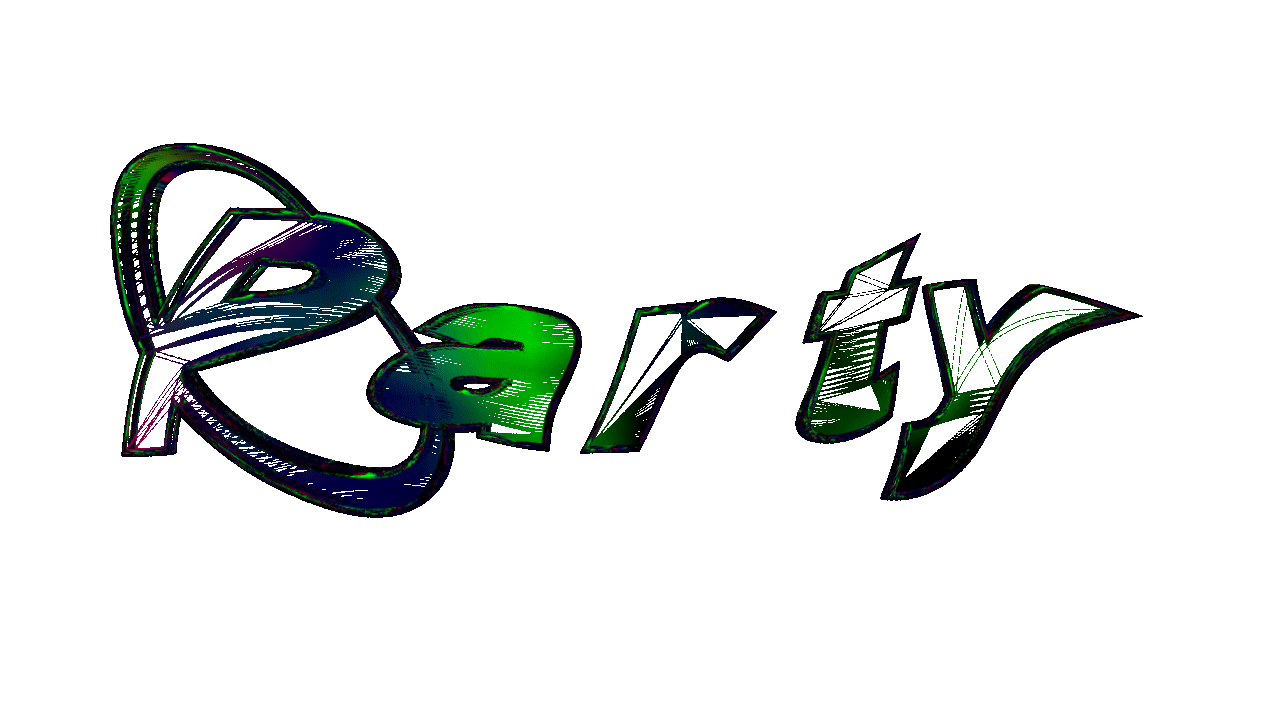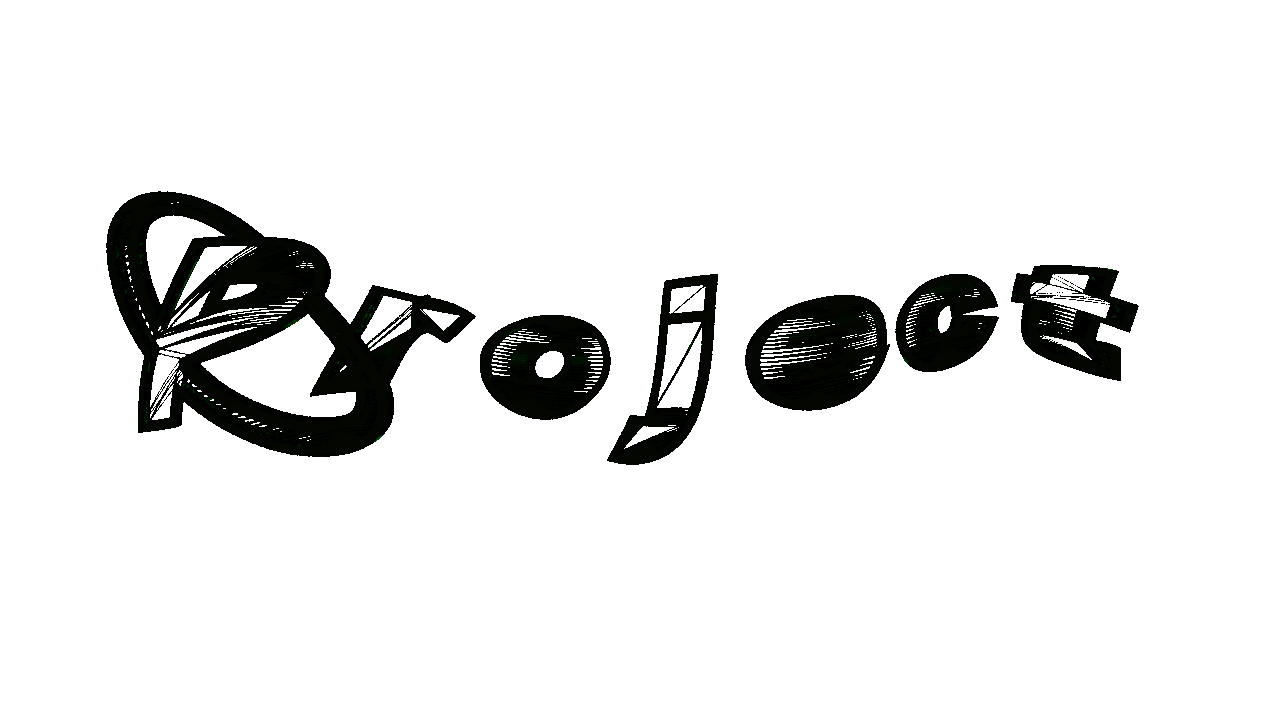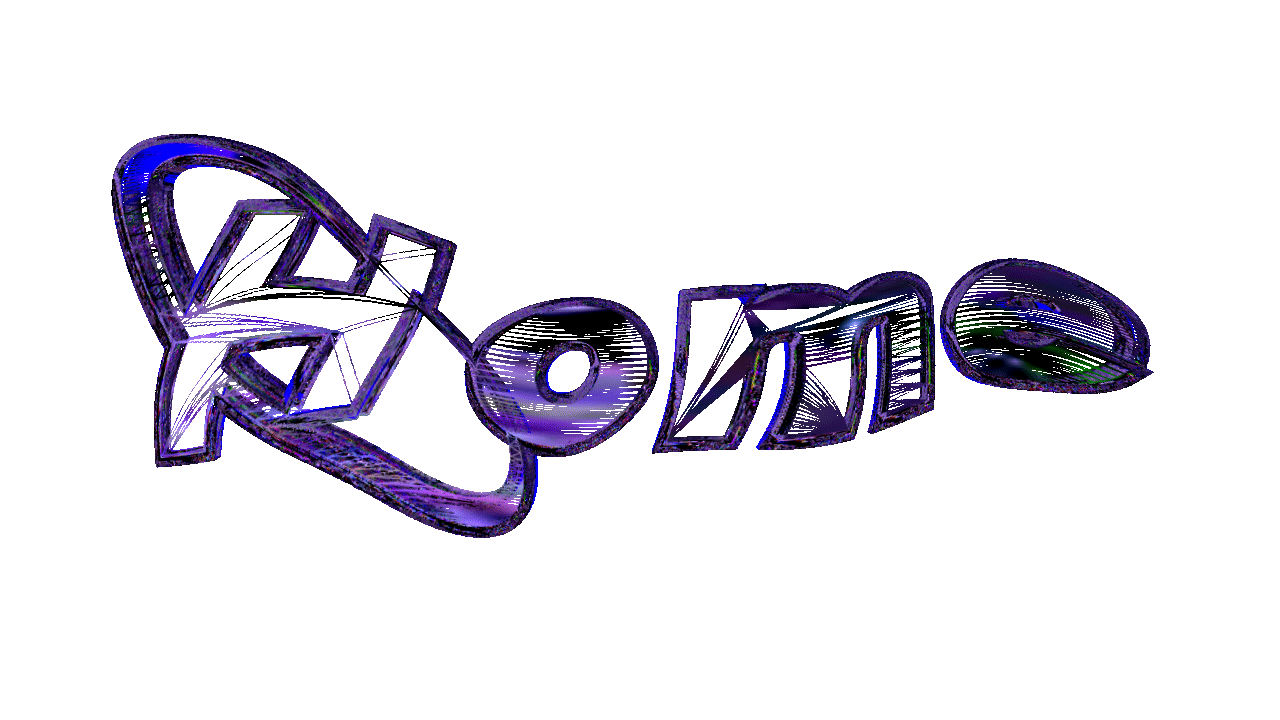



Arno Beck is one of those who command respect at first glance: his work, brilliant and playful, leads us to questioning the duality of graphic production between man and machine. Arno is from Bonn, Germany, where he currently lives and works. He studied the Arts and techniques of painting at the Kunstakademie in Düsseldorf, and graduated in 2015. Interested from his beginnings in digital culture and its transposition into real and tangible space, he developed his work around 'a pictorial production that he copies on that of the machine.
Can man imitate the machine? Yes, if we are to believe the work produced by Arno, in which he uses the aesthetic codes linked to the PCs of the 90s and more specifically borrowed from graphic design software of the “Paint” style. All the visual ingredients are gathered for this work which, initially having to take shape on the virtual canvas (the computer), will take shape on a real and tangible canvas. For his series "New Document" and "Metaspace" we identify here and there the tools necessary for creation: the "brush", the cursor, the lines usually sprayed in a coarse manner, as well as the "neutral" checkerboard background. ; all hand-painted by the artist, who even goes so far as to detail the pixelation of the object, thus showing the imperfection of software which is still in its infancy.
Paradoxically, the result is extraordinary precision and thoroughness, enough to make the machine green with envy. It is this technical and conceptual analogy that is striking when one observes these paintings: blown away by the trompe-l'oeil effect, one would believe in a digital printing on support, whereas it is in reality an image certainly from 'a computer program, but created with a “manual” pictorial technique and transposed into the material space of the canvas. It emerges a real aesthetic of the virtual object, justified by a reflection on the need that man feels to capture this imagery inclined to disappear one day, by its obsolescence, in 3D space: born for disappear, the artist makes a screenshot of his work.
In addition to this, you need to know more about it.



2017 'New Document'
The same goes for his “blockprints” on Japanese paper, the “Arcade Chambers” series produced in 2014, where he himself manufactures the “stamps-dies” on wood, and then comes to print them on a paper support, in 32 colors only (in reference to the GameBoy Color system released in 1998). This slow, "ancestral" or even artisanal technique is completely opposed to serial reproduction, since it is precisely not in the perspective of a multiplication of the production of its images, but on the contrary wants to mark the unique and singular aspect of each print, as in each of his paintings.
This opposition between content and form is accentuated by the choice of its visuals: technology and electronics - progress in short, represented by arcade terminals, become the antisymbol of the speed of execution of the tasks done. by machines. Another technique used by Arno Beck, just as impressive, is that of the typewriter: using typographic characters tirelessly typed on the paper, he manages to produce a totally realistic fresco in shades of black / gray / white. , at the limit of a digital reproduction or a photograph, which he then punctuates with small details drawn from the world of Mario, the famous character of the eponymous video game. It thus makes small clouds or the famous blocks of stones appear in the background, like nods to the generation of "8-bit" video consoles that appeared at the end of the 1980s.
It shows, once again, a duality between man and artificial intelligence: a contrast all the more comical as these small icons, usually visible from a video console since they are present in the game, are found to take shape on Japanese paper in the middle of a landscape that can be taken from a photograph. In a world where there is a fusion between art and new technologies, where very often the diversity of exchanges between one and the other can be observed, Arno Beck pushes his thinking even further by questioning the duality of the creative process and the resulting analogies, but demonstrating that sometimes a traditional technique can equal the ultra-performance of computers


2017 'Metaspace'
Arno Beck is one of those artists who's forcing admiration and respect: his work of art, which is brilliant and playful, questions about duality of graphic production between man and machine. Arno comes from Bonn, in Germany, where he actually lives and works. He studied Fine Arts and Technics of painting at the Kunstakademie in Dusseldorf, where he was also graduated in 2015. First of all, he became interested in digital culture and the way of transposing it into "real space"; he started to build his work around a specific pictorial production modeled on those machines ones.
Can the man imitate the machine? Yes, if we consider Arno's work, in which he takes back aesthetic codes linked to PC in early 90's, and most of all to creative softwares such as “Paint”. All the graphic effects are gathered here in this piece of work, which would initially be intended to the virtual frame (the computer), would finally be drawn on a real canvas. Concerning his series "New Document" and "Metaspace", we can clearly identify the tools used in order to create something: the brush, the cursor, the blurred lines made with a colorspray, and the gray "neutral" checkerboard as a background; an amazing result is emerging from all of this, since everything is hand-painted, even the smallest detail of the pixellisation of the object, showing by the way the imperfections of the softwares in its early stages.
On the other side, his canvas reveal a hudge precision and a meticulous work, something that the machine would certainly be mad about. It's this kind of technical and conceptual analogy which is calling us when we try to catch his works: the “trompe-l'oeil” effect is so mind-blowing that it makes us think about a standard digital printing, while it is in fact a real and "touchable" painting transposed in the third dimension space whose images come from a computer program. The virtual subjects of Arno Beck have a strong aesthetic identity, enhanced by the need to find why men are fascinated by catching these signs, signs which are born to disappear one day due to their obsolescence: Beck's canvas are like traditional screenshot in the third dimension space.
In addition to this, you need to know more about it.




2016 'Syntax Error'
The logic behind his other series called "Arcade Chambers" realized in 2014, is on the same way of thinking - showing duality men VS machines' work, but here he's using different technics: creating wooden-stamps, he's printing images on japanese paper, prints with only 32 colors on it as he makes a reference to GameBoy Colors' system which was sold in 1998. This kind of slowly ancestral and traditional technic is completely contrasting with the idea of mass production, as we used to see in the serial production of images for ads or marketing. On the contrary, his aim is to emphasize the gap between the ability of the machine (and what it is made for) to generate thousands of perfect and cloned images, with the "human hand-made" way of producing single images as a work of art even with printing technic. This gap is becoming more obvious as Arno Beck's visual subject choices are claiming their goal: these arcade chambers are a summary of new electronic systems, symbolizing technological progress while the final artistic process put them on the top of a fail down system with an anti- speed way of execution. In his work, Arno Beck uses another medium in a very impressive and amazing way: the typewriter.
He succeeds in drawing a landscape, as realistic as a photograph or a digital printing at first sight, with all the different typefaces put together and which are matching in order to make us see the several shades of gray, black and white. Then he manages to mix some tiny characters and details of the famous videogame Super Mario World in it, such as the clouds or block of stones, while he wanted to wink at the early "8 bits" gaming consoles in the 80's, making them appear . This serie is showing, once again, the contrast between human and machine production: the funny point of view is that these small symbols used to be seen in a videogame on a TV screen or a computer, while he's making them live on japanese paper among a nearly-photographic landscape.
Moreover in his “Interface (Typewriter)” series, the process of creation is the same but the images produced are close to his canvas series “New Document”: screenshots are made from creative softwares or error messages from the computer. In a world where we can observe a fusion between art and new technologies, and where we also become the witnesses of each others' exchanges, Arno Beck developps his thinking further asking himself about the duality of the creative process and the similarities as an outcome achieved . By the way he's trying to show that sometimes, traditional and hand-made skills are able to equalize computers' over-performance and domination.


More info:
Instagram: @ arno.bec k
Facebook: Arno Beck Studio
In addition to this, you need to know more about it.
In addition to this, you need to know more about it.

